SARMs are selective androgen receptor modulators, which is a new category of compounds that target cellular mechanisms that regulate muscle mass, bone strength, and body fat, among others.
The goal of SARMs is to target specific mechanisms that can be achieved with traditional anabolic steroids, testosterone, or human growth hormone, but with less off-target effects. SARMs are very new, so they are a category of performance enhancing drugs that are still shrouded in a lot of mystery and controversy.
Dozens of SARMs are currently under development by a range of pharmaceutical companies as treatments for muscle wasting, low bone density, low testosterone levels, weight loss, and muscle weakness, but SARMs have also caught the interest of athletes because of their potential for increasing muscle gains, improving muscle strength, and cutting body fat.
Though there’s far more yet to be discovered about the safety and efficacy of SARMs, our research team took a look at the most promising candidates so far.
Research
Rankings
1. Ostarine (Enobosarm, GTx-024)
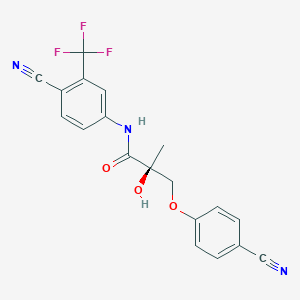
Ostarine (aka Enobosarm) is another SARM that has made it to human clinical trials. Early research into its use in muscle wasting among cancer patients showed promise both among middle-aged men and postmenopausal women in terms of boosting muscle mass, compared to a placebo.
These benefits are encouraging, and have prompted more research underway to study how this SARM can help increase muscle strength and muscle mass.
2. Ligandrol (LGD-4033)
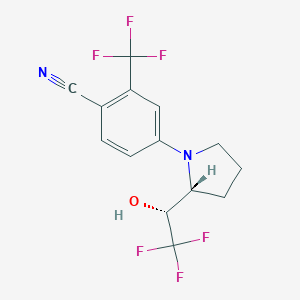
Ligandrol is one of the better-known SARMs, and is alternatively referred to either as LGD-4033 or VK5211 (the name changes reflecting transfer of ownership between pharmaceutical companies).
Ligandrol is one of the few SARMs that have been demonstrated to increase lean body mass in a clinical trial of healthy men.
3. GSK2881078
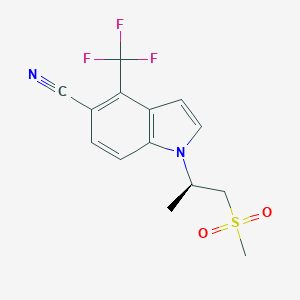
GSK2881078 (no catchy name for this one just yet) is a SARM that has been demonstrated to produce improvements in muscle mass in both men and women in clinical trials without side effects.
It produces muscle gains in a dose-dependent fashion, and more studies on this compound are ongoing. GSK2881078 might be one of the most underrated SARMs right now.
4. Testolone (RAD140)
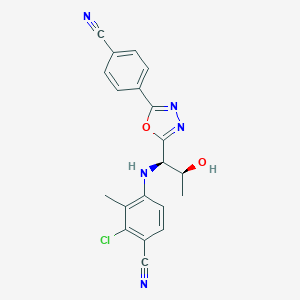
Testolone, also known as RAD140, has been discussed in the scientific literature for about ten years. It’s known to be a powerful androgen receptor modulator, and is bioavailable when taken orally (as opposed to testosterone, which typically must be injected or used as a cream).
Research on Testolone is limited so far to animal studies, though one case study describes a middle-aged man who developed liver injury after using a supplement containing Testolone.
5. BMS-564,929
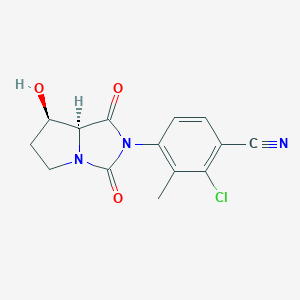
BMS-564,929 has been shown to be an extremely potent SARM in research in rats, boosting muscle growth without adverse effects on other tissues, like the prostate. However, human trials have not yet been published, so the efficacy and safety of this SARM have yet to be demonstrated in people.
6. Stenabolic (SR9009)
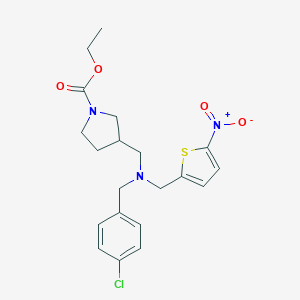
Stenabolic has attracted attention for lab-based studies in animal models that suggest it could improve endurance. It boosts the expression of genes related to your body’s circadian rhythm, but because human studies have not yet been conducted, it is unknown how this compound may affect your body.
Despite the early stage of research, Stenabolic sees some use among bodybuilders and athletes. It, too, is not technically a SARM (it targets a slightly different biological pathway than a true SARM) but nevertheless is thought to have the potential for similar performance benefits.
7. Ibutamoren (MK-677)
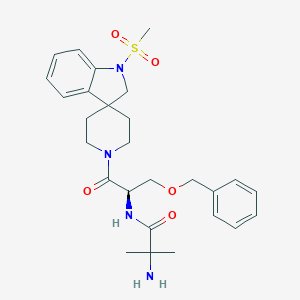
Ibutamoren is not technically a SARM—it is, however, thought to modulate growth factors that are regulated by human growth hormone and insulin-like growth factor (IGF).
The potential promise of Ibutamoren and similar compounds is that they could boost growth factors without affecting cortisol levels. While some early studies found promise for using Ibutamoren both for improving bone density and increasing muscle strength, a large clinical trial for using Ibutamoren in elderly people with hip fractures was ended early because of side effects.
8. Andarine (GTx-007)
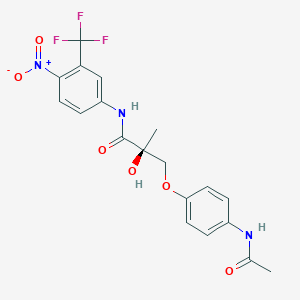
Andarine is earlier on in the drug development process. So far, research on this SARM has been confined to animal models and cell cultures. While results have been promising, more research in humans is needed to determine whether these benefits carry over to humans.
9. YK11
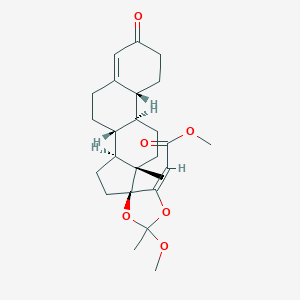
YK11 is a little-known SARM that has only started getting attention after a pair of papers published in 2011 and 2013 highlighted its ability to upregulate the production of muscle cells and bone cells.
There are hopes that this SARM could boost muscle strength, lead to muscle mass gains, and increase bone density—however, there haven’t been any promising studies in humans yet. Keep an eye on this SARM to see if it holds up in human studies.
10. LY2452473
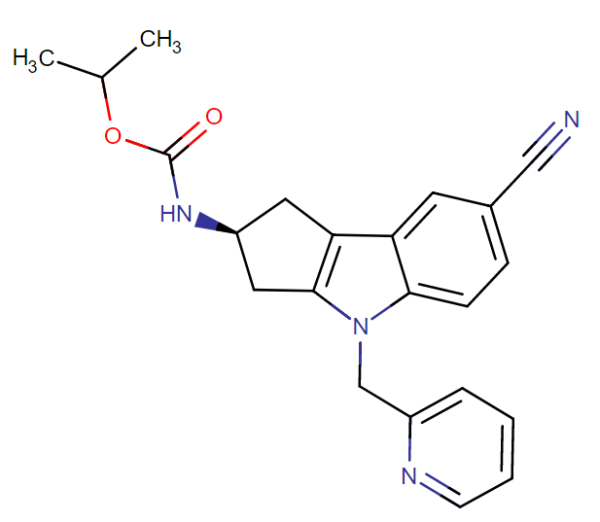
LY2452473 is a SARM that has shown some interesting properties in the lab, but is extremely early on in the development stage. It could improve muscle strength, bone density, and treat erectile dysfunction, but so far, the only human studies have been basic studies in a few people to study how the drug is metabolized. Keep an eye on this one, but for now, there’s far too little known about it to characterize its strengths and weaknesses.
Who should buy SARMs?
Who, and in what circumstances, SARMs should be used is a hot topic for debate. The intended goal of SARMs is to provide a more targeted approach to achieving the same kind of benefits that are possible with androgen agents like testosterone, human growth hormone, or traditional anabolic steroids like Winstrol, Dianabol, or Deca-Durabolin.
One of the perennial problems with these broad-spectrum anabolic or androgenic agents is that they can have unintended consequences. For example, exogenous testosterone can be “aromatized” to estradiol, an estrogen hormone that can cause side effects like gynecomastia (1).
At their best, SARMs are able to selectively create an anabolic or androgenic response in certain tissues (like muscle cells) but not other tissues. By analogy to traditional anabolic steroids and androgen compounds, SARMs will only be useful for people who have already been training fairly hard for a few years.
This is not because androgens and steroids don’t work on people who aren’t already athletic—they do, which is why they’re being pursued as pharmacological treatments for muscle wasting and other health problems.
The rationale is that the benefits a sedentary or casually active person would gain from steroids, testosterone, or SARMs are easily achievable with more serious training, which is an alternative that avoids the potential side effects.
The potential clinical applications of SARMs make it pretty clear what SARMs are being developed to do. The hope is that new SARM molecules will be able to encourage muscle growth, decrease body fat while increasing lean body mass, improve bone density, boost testosterone levels, and increase libido. Hence the number of clinical trials using SARMs to target muscle wasting, weight loss due to cancer or other chronic diseases, erectile dysfunction, and fatigue.
Some SARM-like compounds take an analogous approach to boosting human growth hormone. These SARM-like compounds (Ibutamoren or MK-677 being a good example) aren’t technically SARMs but are often discussed alongside SARMs, because they are using selective targeting to try to achieve similar effects (i.e. boosting human growth hormone levels in the case of Ibutamoren).
The athletic applications are clear: stronger muscle, better endurance, lower body fat content, and faster recovery after difficult training sessions.
If you are considering using SARMs, you should be aware that these compounds are very poorly understood, and very poorly researched. Many of them do not even have formal names yet; they’re referred to solely by their research chemical designation, such as GSK2881078 or LY-2452473.
While the goal of developing SARMs is to get all the benefits and none of the side effects of traditional steroids or testosterone and human growth hormone injections, whether any particular SARM will actually achieve that goal is very much up in the air.
Several potential candidates for SARM drugs have been pulled from clinical research because they either aren’t as effective as intended, or they show the potential for worrisome side effects.
Using SARMs is a much riskier proposition than taking a typical performance-enhancing nutritional supplement like creatine, pre-workout, or beetroot powder. SARMs deal with much more powerful hormonal mechanisms, the appropriate dosage is very poorly understood, if at all, and virtually no SARMs have been around long enough to evaluate their potential for long-term side effects.
On top of these reasons, SARMs are prohibited by most sporting bodies that regulate supplement and drug usage, such as all Olympic sports and other competitions under the oversight of the World Anti-Doping Agency. SARMs also cannot be legally sold as over the counter nutritional supplements, which leads to shady manufacturers advertising SARMs that don’t actually contain the claimed product on the label.
It is important to keep all of these risks in mind when evaluating the risks and benefits of SARM usage, since they are in a decidedly different category compared to your typical sports performance supplement.
How we ranked
We based our rankings of the most promising selective androgen receptor modulators based on the most up-to-date scientific literature.
Our research team surveyed the published scientific literature for clinical trials on the efficacy and safety of various SARMs, and also searched the US National Library of Medicine’s ClinicalTrials.gov database, which lists all current and former clinical trials of pharmaceutical drugs—even those that have not been completed, and those that have not yet been published.
These listings, even though they didn’t tell us anything about the proven efficacy of a SARM, still gave us insights into which SARM compounds were considered promising enough to move into clinical trials.
SARMs that have only been discussed or proposed, but never implemented into a clinical trial or published study, got eliminated from our list. We also penalized or removed SARMs that had serious known side effects, though our ability to do so was substantially hampered by a lack of information on many of the potential SARMs people may be interested in using.
With normal nutritional supplements that are well-known and well-studied, our team has access to information from large studies with data on both the benefits and side effects. Something like green tea extract is a good example: both its benefits and potential side effects are well-documented.
With SARMs, we are so early on in our understanding that it can be hard to evaluate a given compound, because hard data on efficacy and side effects are hard to come by. As a result, we rated SARMs that did have promising results or good data more highly.
Our top ranking positions were reserved for SARMs that had demonstrated at least some success in clinical trials for our most important outcomes: muscle strength, muscle mass, endurance, or body fat content. By applying these criteria, we rounded out our rankings for the most promising SARMs under consideration by researchers right now.
Benefits
SARMs may increase muscle mass and muscle strength without some of the negative side effects of traditional testosterone treatments. SARM stands for selective androgen receptor modulators, and are an increasingly popular target for research because of their potential to generate many of the same physical benefits of androgens (e.g. testosterone) without the adverse effects.
Testosterone replacement therapy is associated with side effects like acne, prostate hyperplasia (an abnormal, albeit benign, enlargement of the prostate), and gynecomastia (swelling of breast tissue).
These off-target effects are the result of receptors in these off-target tissues (like the prostate) interacting with testosterone and its derivatives.
The goal with a SARM is to only bind to the receptors at the tissues of interest, like muscle and bone cells (1). The hope is that by doing so, SARMs will not generate the same side effects that testosterone and its direct derivatives generate, while still gaining the same or even greater performance benefits.
Other SARM-like research chemicals are also being pursued for similar performance enhancing benefits. While SARMs are technically a fairly limited category of compounds, there are several SARM-like compounds that are mentioned alongside SARMs when it comes to next-generation research chemicals that are of interest for performance enhancement.
These include compounds related to human growth hormone, like Ibutamoren, and Stenabolic, which upregulates a separate biological pathway. These are often considered alongside SARMs because they too employ tissue-specific targeted effects, usually at the level of muscle cells and bone cells, to boost strength or endurance.
Like SARMs, they are of interest to clinical researchers as a way to treat muscle wasting, weight loss, and low bone density that occur as a result of aging or chronic diseases.
Only a few SARMs have been tested in clinical trials, but early results are promising. Most SARMs have research chemical-like names (RD140, YK11, etc.) because they haven’t yet been debuted on the market, or even assigned a shorthand chemical name.
However, a few SARMs have made it to clinical trials in humans, sometimes in healthy volunteers and sometimes in people with diseases. Ligandrol, or LGD-4033, is one such example.
A research study published in 2013 in the Journal of Gerontology detailed its effects in young healthy men (2). Some 76 volunteers were split into a placebo group and an experimental group, which received either 0.1, 0.3, or 1.0 mg of Ligandrol every day for three weeks.
The researchers recorded no adverse side effects, and they found that the Ligandrol group experienced increases in lean body mass, with no changes in markers of prostate function. These results were impressive for only three weeks—even an intensive weight training program is unlikely to make a difference in lean body mass over such a short period of time.
Similar results have been reported for Enobosarm (also known as GTx-024) in a study of healthy older men and women. Research published in the Journal of Cachexia, Sarcopenia, and Muscle demonstrated the efficacy of this SARM in 120 experimental subjects (3).
While clinical trial data are lacking for many of the newer and most interesting SARMs, these preliminary results in some of the older SARMs show promising results both in terms of their ability to increase muscle mass and in terms of their safety profiles.
Many SARMs can be taken orally instead of injected. One of the other major advantages of SARMs over injections of testosterone, or human growth hormone for that matter, is their oral bioavailability. As most men who have looked into testosterone treatment know, testosterone typically has to be delivered using an intramuscular injection, or with a transdermal cream, gel, or patch.
SARMs offer the possibility of taking a simple oral capsule or tablet and getting all of the same benefits. The specifics of why (some) SARMs can be taken orally has to do with the biochemistry of the individual molecules: testosterone and other hormones or steroids often cannot survive in the acidic environment of the stomach, or cannot be absorbed in sufficient amounts to have an effect on the body.
SARMs, as a result of differences in their molecular structure, are more resilient against stomach acid and are more amenable to being absorbed through the stomach and intestines. Thus, SARMs do not have the same concerns about syringes and needles as some forms of testosterone or human growth hormone administration.
Side effects
Some research has found evidence that SARMs can cause liver damage. When new biologically active compounds are discovered, one of the biggest concerns is their effect on your liver. That’s because the liver is where biologically active compounds are metabolized and broken down.
While the limited clinical research on SARMs has not uncovered widespread evidence of liver damage, a small number of case studies have suggested that certain SARMs could cause liver injury. One case series published in 2020 in the journal Hepatology Communications detailed a pair of cases where Ligandrol (LGD-4033) and Testolone (RAD-140) led to liver damage in otherwise healthy men (4).
As with many case reports, it’s difficult to tell whether this was a direct effect of the SARMs alone, or an interaction between SARMs and other compounds (one of the men was on an antidepressant, and the other was an occasional binge drinker).
However, given that many research chemicals do not make it to market precisely because of deleterious health effects, it’s worth considering the possibility that SARMs could cause liver damage.
SARM usage might also lead to a decrease in your levels of HDL (“good”) cholesterol. In one of the first systematic reviews of SARMs as a medical treatment, two doctors at Boston University School of Medicine reviewed research on a range of so-called “first-generation” SARMs, including ostarine, andarine, and BMS-564,929 (5).
While some of the benefits were promising, they did note the potential for liver toxicity (discussed earlier), as well as the potential for some SARMs to substantially reduce levels of HDL cholesterol.
Some SARMs and related compounds have been pulled from research because they caused cancer in lab animals. One of the earliest and best-known examples of SARM-like compounds is Cardarine, also known as Endurobol or GW501516.
Cardarine is an extremely controversial compound. Like Ibutamoren, it is not technically a SARM—it targets a separate biological mechanism. Cardarine made big headlines after animal models showed a boost to endurance performance (hence the name Endurobol), but later research found that Cardarine led to the development of cancerous tumors in mice.
Despite these obvious safety risks, it’s caught to a wide enough degree for some to speculate that the Russian state doping program includes this compound for endurance athletes.
After research in lab animals showed high doses led to a significant increase in endurance, there was a huge surge in interest in Cardarine. Later research confirmed the endurance benefits, particularly when combined with endurance training, in lab animals (6), and the compound started showing up in doping programs in sport.
However, other research showed a major problem—this same research chemical also led to a vast acceleration in the growth of cancer cells (7). While Cardarine is still used as a doping agent, the concerns about its carcinogenic toxicity put the brakes on any research considering its use in medicine.
All SARMs and SARM-like compounds share similar problems: they are so poorly researched thus far that it is difficult to know whether they have serious adverse effects.
Finally, SARMs ordered online may not deliver what they promise. A study published in 2017 in the Journal of the American Medical Association analyzed 44 different SARMs sold online to verify the contents of each product (8).
After analyzing each product with precision analytical chemistry equipment, they found a few remarkable results. First, only half actually contained any SARMs at all.
Second, one quarter of the products contained SARMs or SARM-like compounds that were not actually listed on the label.
These findings underscore the gray-market nature of SARMs, highlighting how difficult it is to get high-quality products. It almost goes without saying that unlabeled ingredients increase the risk for adverse side effects.
FAQ
Q: Are SARMs steroids?
A: SARMs are similar to steroids in their intended purpose, but in a technical sense, SARMs are not steroids, chemically speaking.
From a performance perspective, they serve similar ends: both steroids (including testosterone and other anabolic steroids like danazol) and SARMs aim to boost muscular strength, increase muscle mass, and drop body fat.
Like steroids, SARMs are also prohibited by many sporting bodies, such as the World Anti-Doping Agency, so they aren’t suitable for athletes who compete in regulated sports.
Q: Are SARMs dangerous?
A: One of the biggest unknowns surrounding SARMs is their safety. They are being designed with safety in mind; one of the purposes of pursuing SARMs is to use their selectivity to cut down on the side effects associated with taking traditional steroids.
However, SARMs are very new: many have never been tested in humans in a formal clinical trial. Even among those that have, results are few and far between. Some case studies have reported liver damage among bodybuilders using SARMs, sometimes in combination with other supplements and medications (9,10).
As a result, there is some concern about SARMs being dangerous, though far more research needs to be done to establish the safety of individual SARM compounds.
Q: Do SARMs actually work?
A: SARMs span a broad category, from compounds that have been tested in multiple clinical trials, to research chemicals that have never been formally used in humans in a research setting.
There is some evidence that the strategy of selective androgen receptor modulators does lead to direct benefits in muscle mass: human trials of both Ligandrol and Enobosarm have reported positive results compared to placebo (11,12).
However, just because one SARM is effective does not necessarily mean another SARM will be effective too. Undoubtedly some SARMs which have shown promise in animal models won’t hold up in human studies, but we can be hopeful that some will show potential in human trials.
Q: Are SARMs safer than steroids?
A: Sarms are designed to have fewer side effects than steroids, but there is a huge gulf in terms of actual research in humans on SARMs, compared to the research that has been done on traditional steroids.
The side effect profile of steroids, including testosterone, is well-studied and well-understood. The side effect and safety profile of SARMs, in contrast, is shrouded in mystery, given that most research into SARMs has been done in the past ten years or so.
Q: Are SARMs useful for bodybuilding?
A: SARMs are wildly popular among bodybuilders, and have been seen as potentially easier to acquire and use compared to regular steroids.
Unlike testosterone, many SARMs can be taken orally, instead of being injected or delivered transdermally in a cream. SARMs are popular in bodybuilding partially because it has a more permissive culture when it comes to performance enhancing compounds—SARMs, like steroids, are banned by most sporting bodies.
The benefits of SARMs do map pretty well onto the goals of a bodybuilder: more muscle mass, greater muscle strength, and less body fat, all without the detriments of testosterone being aromatized into estradiol.
Q: What SARMs have been tested in human trials?
A: The best-studied SARMs so far are Ligandrol and Enobosarm. These have been tested in human trials and both have been shown to result in increases in lean body mass in as short as three weeks of use.
However, many other SARMs have much less evidence for their benefits, and in fact some have never even been officially tested in humans (no doubt there have been unofficial or secret tests—the notorious Russian doping program has at times involved SARMs that haven’t shown up in any published scientific studies in humans).
Q: What is a SARM cycle?
A: Like a cycle with a cutting stack or a bulking stack, a SARM cycle is a set amount of time (usually in weeks) where you use a particular SARM, then cycle off. The idea is to promote meso-cycles of adaptation in your muscles, and in most SARM cycles, these waves of adaptation are paired with concomitant increases and decreases in training intensity.
Because a SARM is thought to boost your body’s ability to recover after workouts, you can train harder when taking one, but some trainers think that benefits accrue better in the long run if you cycle on and off of SARMs, and these longer intensive training sessions.
Q: Can SARMs increase your strength?
A: Most clinical trials thus far have focused on SARMs and lean body mass, which is closely analogous to strength though not always synonymous.
Lean body mass is easy to measure in a clinic, and is a bit more reliable than maximum strength. Nevertheless, it’s only a matter of time before clinical trials start appearing that test the benefits of SARMs directly on strength.
It also doesn’t take much of a leap of faith to assume that increases in lean body mass will translate to an increase in raw strength.
Q: What is an S4 SARM?
A: S4 is a shorthand name for one specific SARM, called Andarine. Andarine is pretty early on in the drug development process; it has not been studied in humans with the same level of detail as SARMs like Ligandrol and Enobosarm.
Nevertheless, Andarine is quite popular among bodybuilders looking to gain lean body mass and improve strength.
Q: Do you have to inject SARMs?
A: No, most SARMs can be taken orally. This is one of the attractive features of SARMs over traditional anabolic steroids and performance boosters, such as testosterone and human growth hormone.
SARMs can be taken in a capsule or pill, and still be absorbed by your body. However, because SARMs are so poorly studied right now, appropriate dosage levels are not at all clear.
Q: Can SARMs help you lose fat?
A: To the extent that SARMs mimic the effects of traditional testosterone at the level of muscle and fat cells, they should help you lose fat as well as increasing your muscle mass.
This is a less well-studied outcome of SARM usage, mostly because scientific research on SARMs is focused on putting on muscle mass in people with sarcopenia (age-related muscle mass loss), muscle wasting from chronic disease, and other conditions.
While the evidence is not as strong that SARMs can help you lose fat, there is strong theoretical justification that, because of their mechanism of action, SARMs should lead to fat loss as well as muscle gain.
Q: Are there drug tests for SARMs?
A: Yes, most major anti-doping agencies have developed tests for the metabolites of SARMs in blood and urine. However, these tests are very new—some SARMs have only been detectable in the past few years, and there are no doubt newer, unknown SARMs that cannot yet be detected at all. Regardless, if you are competing in a sport that conducts doping tests, you should assume SARMs are detectable.
Related articles
- Testosterone booster
- Human growth hormone
- Natural steroid alternative
- Bulking stack
- Cutting stack
- Tribulus Terrestris
Recap
SARMs, or selective androgen receptor modulators, are chemicals that are specifically designed to reap the same benefits of testosterone and anabolic steroids, but with a more targeted approach.
They’re a topic of great interest both for pharmaceutical companies and for people interested in performance enhancing compounds in sport, given their potential to boost muscle strength, increase muscle mass, decrease body fat, improve bone density, and treat low libido and erectile dysfunction.
However, research into SARMs is still very much in the early stages. While the intent of SARMs is to reap the same benefits as steroids but with fewer side effects it is not clear if the current crop of SARMs that have been discovered thus far will actually result in that outcome.
Some SARMs have been associated with liver damage and large decreases in HDL cholesterol (so-called “good” cholesterol), which has led to more pessimism at least surrounding first-generation SARM compounds.
There is a lot of promise and interest in SARMs, but when it comes to hard data on how well they work, what the optimal dosage is, and whether or not they are safe, we are still waiting for more research.